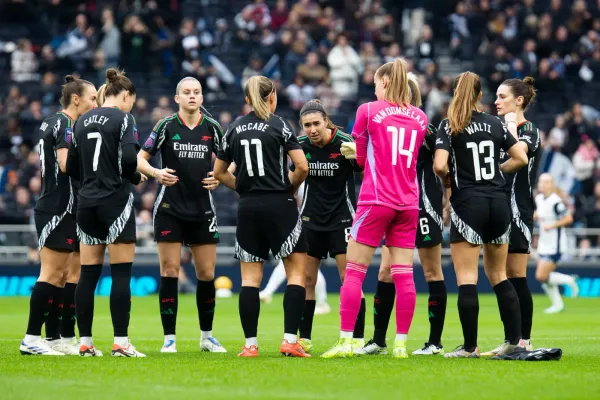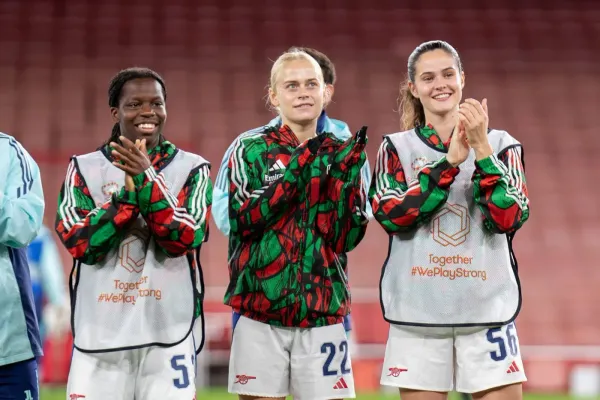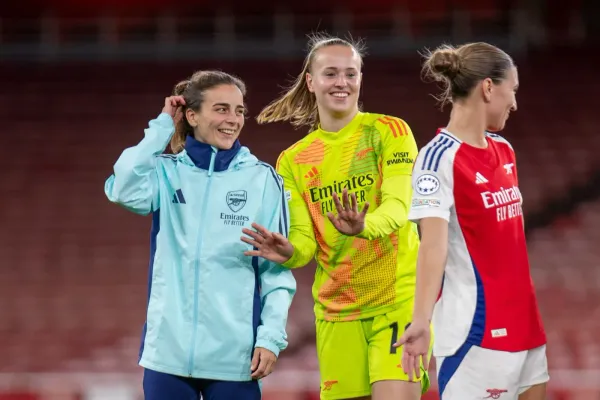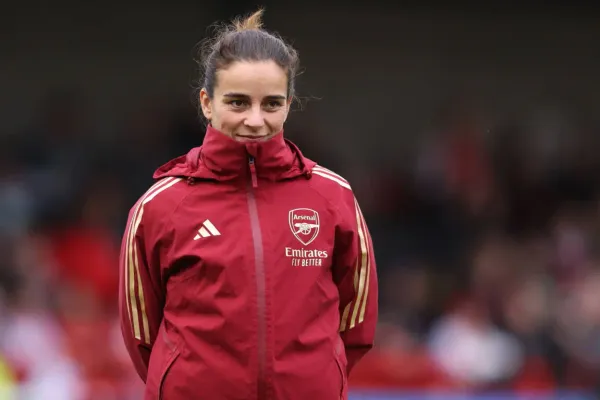Breaking the (low b)lock
On Arsenal Women's improvement against low blocks
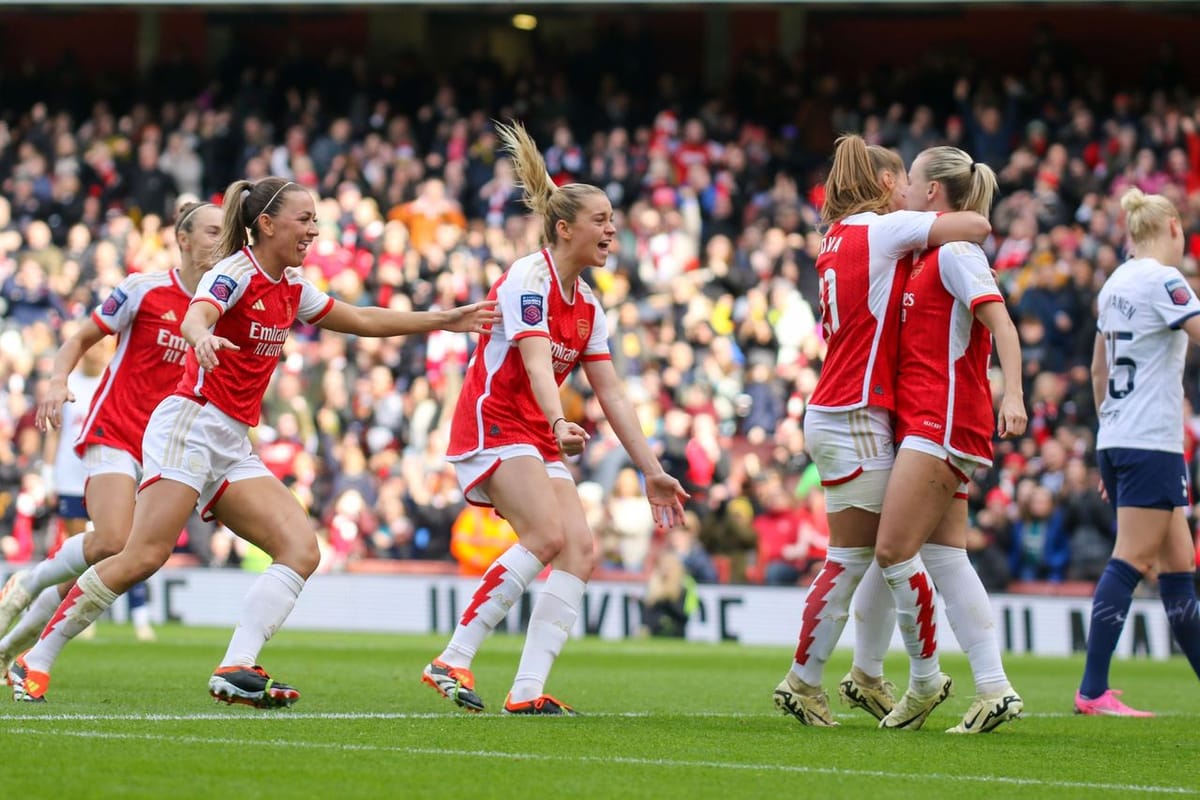
After the 5-0 win over Bristol City last weekend, Emily Keogh from ESPN asked Jonas Eidevall whether he felt Arsenal’s issues with low defensive blocks were close to a resolution. He started his answer with, ‘Tim has been asking me a lot about low blocks this season,’ with a semi sigh. Clearly, it has been the big tactical issue of the season for the Gunners, with defeats against Tottenham, Liverpool and West Ham removing their chance to properly compete for the league title.
Arsenal entered the winter break off the back of a pair of results that defined the first half of their season. After walloping Chelsea 4-1 at the Emirates and hauling themselves back into the title race, they went to Spurs a week later and lost 1-0. Eidevall took his team to Portugal ahead of the resumption of the calendar in 2024 and a lot of the work he and his coaching staff did focused on breaking down low blocks.
Thanks for reading Arseblog News - Arsenal Women Newsletter! Subscribe for free to receive new posts and support my work.
Arsenal played Feyenoord in a friendly, then fielded the same line-up for an FA Cup tie against Watford and then fielded the same team again in a 2-1 victory over Everton in the WSL. It is clear that Eidevall and his staff wanted rhythm, continuity and for the work they had done over the winter break to really take hold.
There was a stutter in a 2-1 defeat away at West Ham in early February having taken the lead. Eidevall has consistently maintained that he felt that game to be a blip and, otherwise, the team has steadily improved against deep blocks. He has pointed to the similarities of Beth Mead’s winner against Everton in January and Alessia Russo’s winning goal against Spurs a month later as evidence that certain ideas were beginning to take hold.
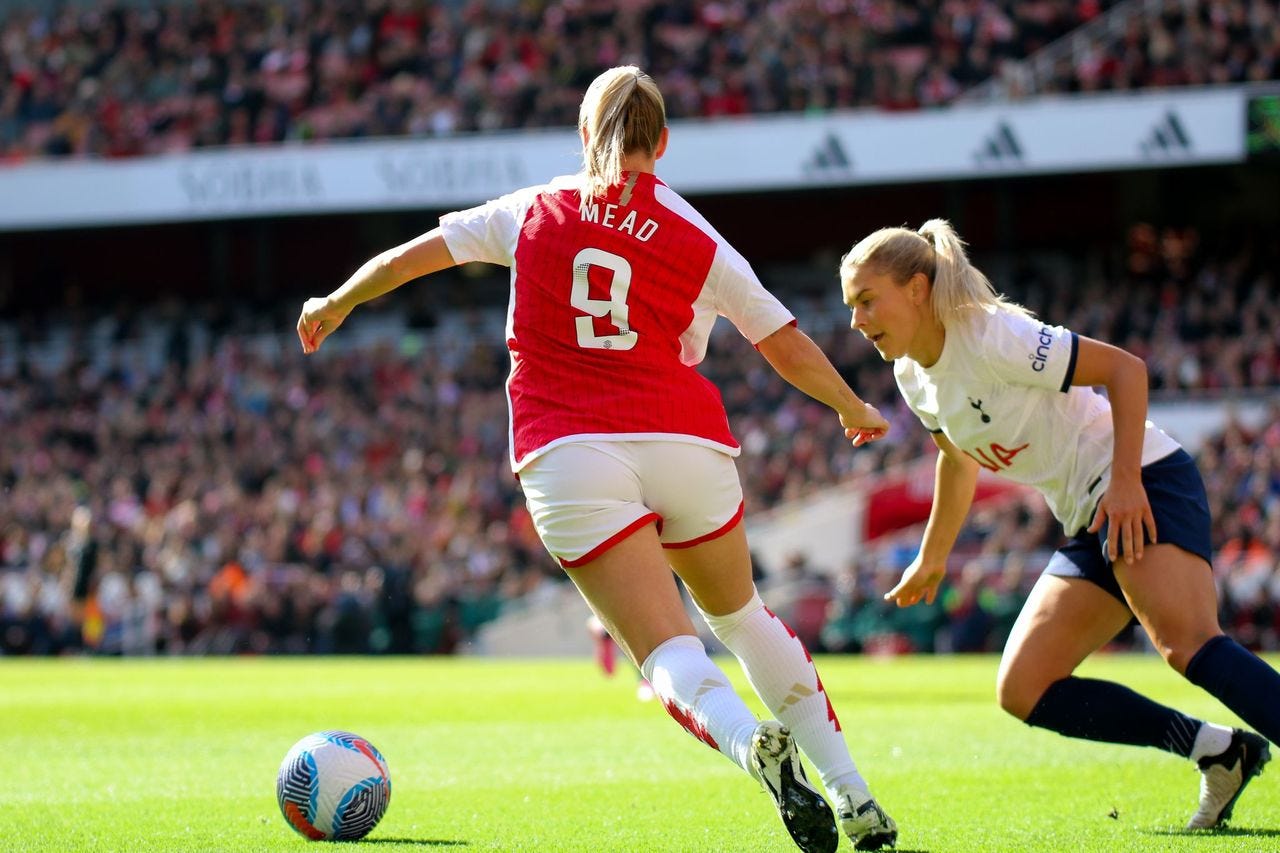
At Villa Park in March, Arsenal went a goal down in the first half in what turned out to be the only shot the home team conjured in the whole match. 1-0 down at half-time and facing a low block, the pattern and the pain seemed familiar. Arsenal put up an XG of 3.64 in the second half, scoring three goals and hitting the woodwork twice. Villa’s deep block, even with a goal lead to defend, did not faze Arsenal this time.
Since then, Arsenal have put up 3.3XG against Bristol City and 2.8 against Leicester City on top of the 4.0 they managed at Villa. That is three of their top six XG performances this season. While their best XG performance of the season was in the reverse game against Leicester in November (6.1) the identity of the other teams within that band is revealing. Arsenal managed 3.0 XG against Chelsea and Manchester United at home (they won penalties in both games, which moves the XG notch up a healthy 0.7 or so).
In other words, putting up significant XG against deep block defences is a recent phenomenon and suggests that Jonas Eidevall was not spinning his answers when he said he could see improvement earlier this year. I think there are a couple of soft factor reasons for this breakthrough. Beth Mead has four goals in her last two games and I think she is likely beginning to feel closer to her best form again following a long layoff with an ACL injury.
Alessia Russo has scored five goals in her last five WSL starts and I think she is beginning to settle into the team a little more. Russo has played as a 9 and as a 10 across those starts (against Leicester on Sunday she played in both positions) and I think she is gaining an increased understanding of her teammates and what is required of her.
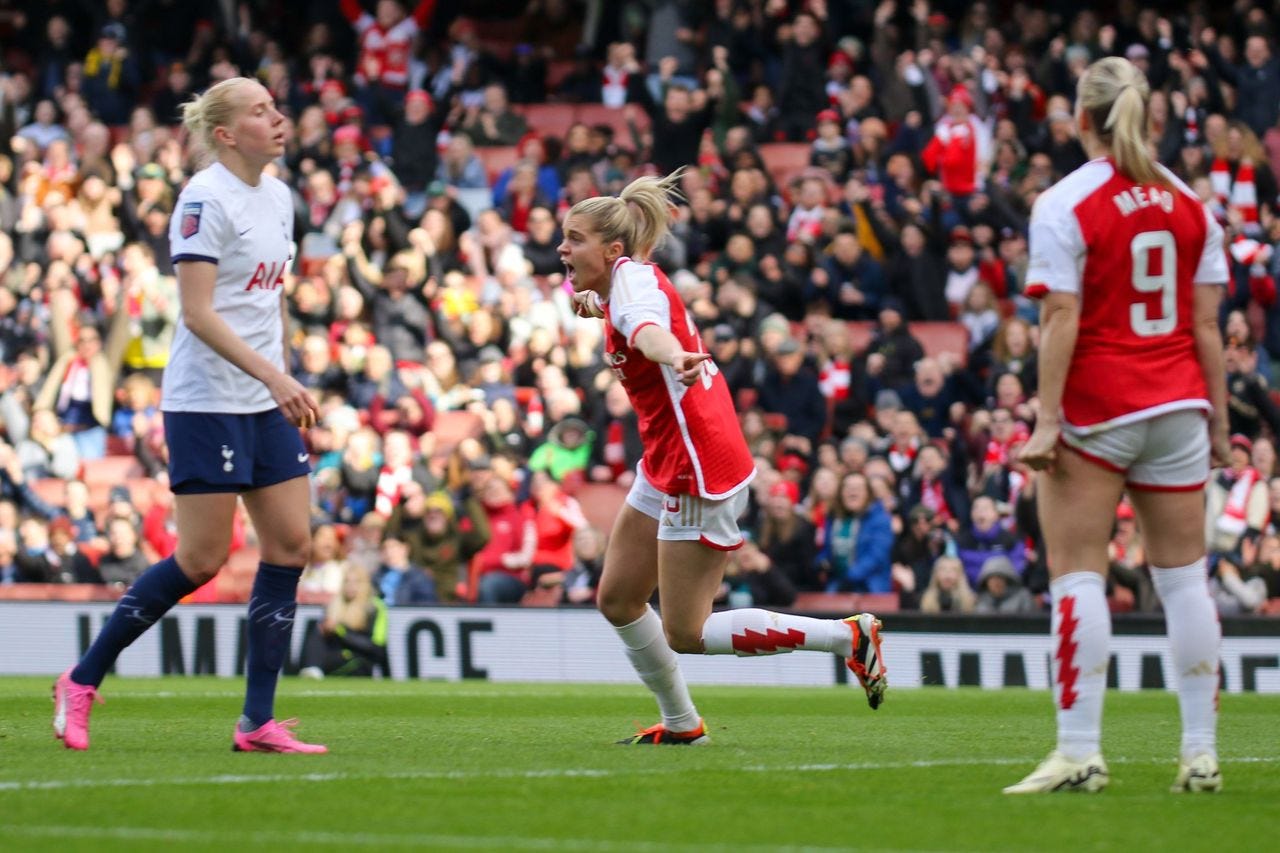
Arsenal really want to convince Stina Blackstenius to extend her contract, which expires this summer, so I suspect there is a touch of expediency in starting her in the last four WSL games as well as the Conti Cup Final. The unavailability of Maanum and Miedema has opened up the number 10 position for Russo a little too but I thought something Jonas Eidevall said about Stina’s performance against Bristol City recently was really interesting.
‘Almost all goal scoring opportunities we create is Stina creating space in front of the back line with her running and her positioning. That is such an important part in football, especially when you are playing against a low block.’ Previously, most of Blackstenius’ starts were against high line defences (she started both WSL games against Manchester United).
Here, Eidevall talked up her contribution in terms of creating space and occupying low block defences. Russo and Mead each scored a brace in that Bristol City game. It is probably too much to say this suggests a change in thinking since Blackstenius was a main starter for Arsenal for 18 months prior to this season. I do think it represents an evolution though.
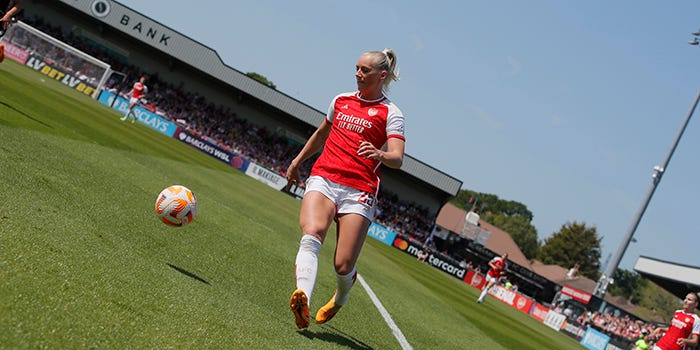
Eidevall has also found slightly different answers to similar questions across the last couple of months. Against Aston Villa, for example, there was a big emphasis on switches in play, as I set out in my post-match analysis piece. Arsenal would generally build on the right, attract the Villa defence over before launching a big switch to the left side.
Against Bristol City, Arsenal decided to, essentially, use five forwards to match up Bristol City’s back five. In essence, it was Blackstenius upfront pushing the Bristol line backwards, while Mead rolled into central positions alongside Russo, Catley underlapped on the left inside of Foord, who held the width. While Emily Fox often played like a right winger, though she also often came inside and popped up in number 10 like positions.
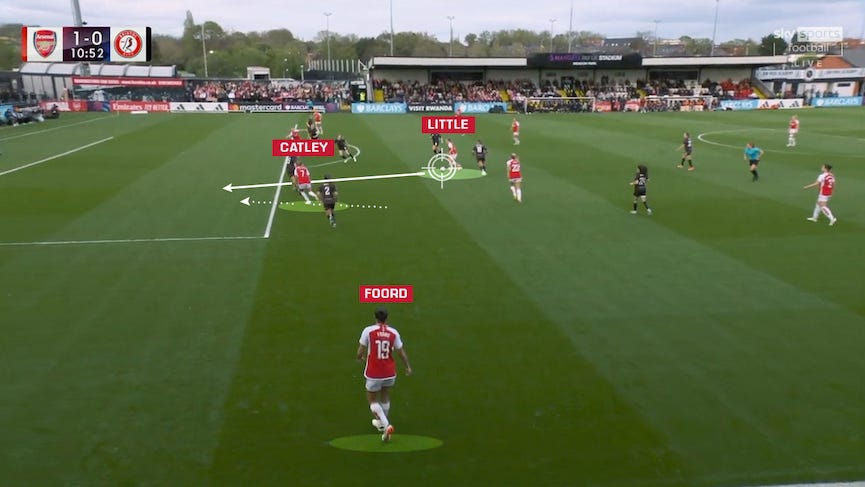
While Foord held the width of the pitch on the left against Bristol City, against Leicester, she was encouraged to float inside and popped up on the right and in central positions. For Arsenal’s opening goal, Foord is in the right channel to combine with Mead. When I asked Jonas Eidevall about her freer role after the game, he gave two really interesting insights.
‘The way we could build using Steph Catley as a left central defender gave us a lot of options.’ Eidevall felt that having a left-footed centre-half opened up more interesting passing angles for a left winger to move inside. But the second half of his answer was more revealing in a general sense, ‘As you saw, we had fluidity, we were not set in that or doing one thing. A lot of that is the decision making of the players, what they need to consider is that we need to attack with balance and making sure we see that players move and start to react. They did that really well today.’
This, to me, suggests attacking players are being given greater license to make independent decisions about their movement. Eidevall’s coaching is based around having a strong structure, it is why Arsenal’s results against bigger opponents have improved markedly under his tenure. But in games against low block defences, there is a greater need for invention and improvisation and I suspect Eidevall has shown greater permissiveness for this against certain types of opponent.
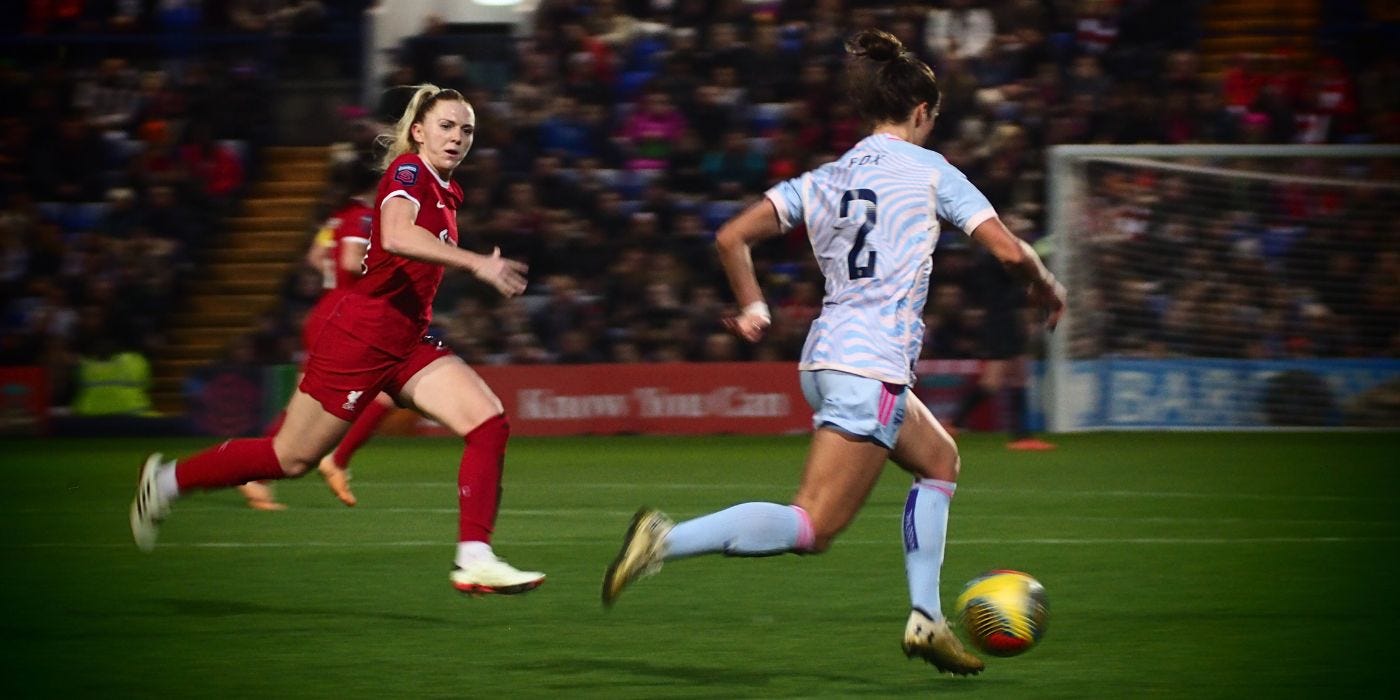
The arrival of Emily Fox has also been a welcome salve against low block defences. Eidevall has talked a lot about her ability to hold the width of the pitch and to roll inside into more central positions. On Sunday, he said, ‘There is one instance in the second half where Emily Fox is contesting a ball in the pocket, she loses the duel then she recovers 15 metres to win the other duel with the players who comes in the back. She plays the ball forward and from there on, she ends up in the penalty area and having a shot. It shows how athletic she is, she can cover so much ground. That right side for us can be really aggressive on and off the ball.’
Williamson’s return to fitness, Mead’s increasing sharpness and Fox’s arrival have beefed up Arsenal’s right side significantly. Fox has had seven shots on goal in Arsenal’s last three WSL games, which is a very high amount for a full-back. She is not just able to overlap and provide support for a winger but she is able to move inside and have goal scoring opportunities for herself. That has a knock-on effect for Mead on the right flank, who can rotate positions with Fox so one is inside and the other is outside.
That both creates unpredictability for opponents and creates favourable passing lanes between Fox and Mead. Exchanging passes on the touchline does not create as much danger as when the players are more parallel to one another. Fox’s power and speed are important here, both in creating offensive danger and recovering defensively.
Eidevall also pointed to an improved defensive record in terms of getting better at handling disciplined teams. ‘Earlier on in the season in too many games we conceded goals and that is not really like us. When we look here, the latest run of games we don’t concede so many goals. It is such an important starting point when we are looking to win.’ It is certainly one of a number of factors that has led to Arsenal’s improvement against mass defences.
Thanks for reading Arseblog News - Arsenal Women Newsletter! Subscribe for free to receive new posts and support my work.

